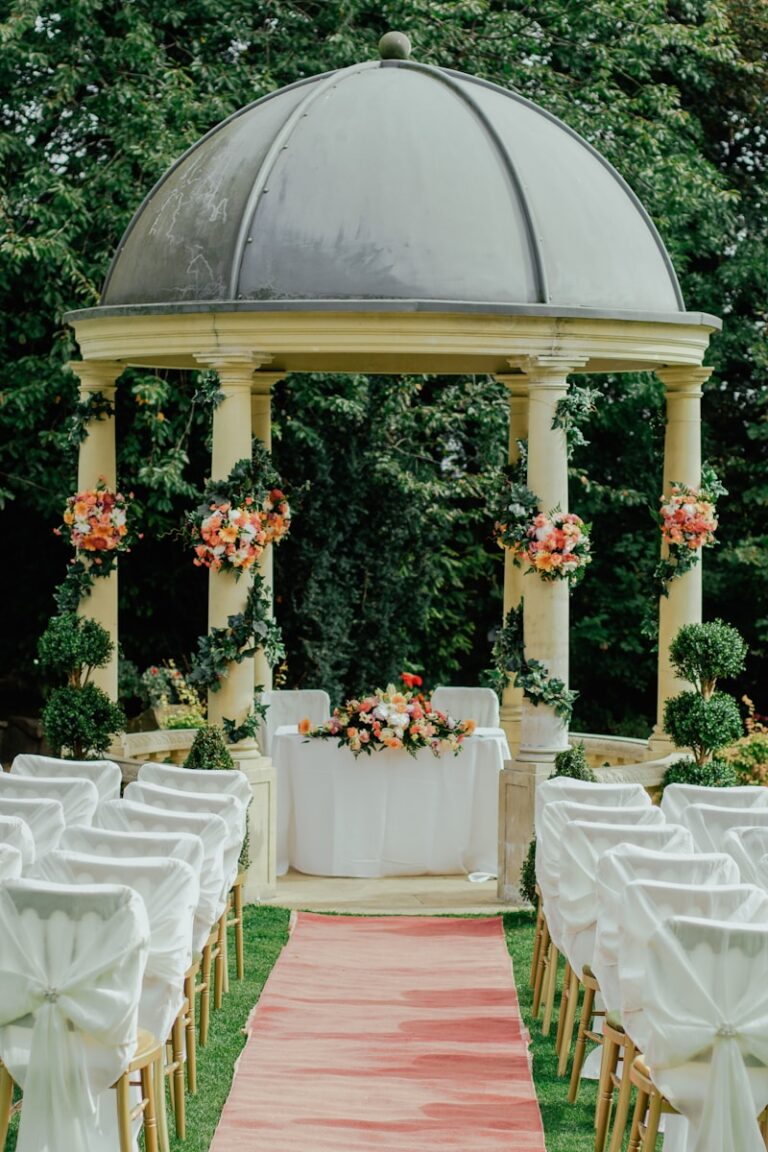The script is left blank for couples organizing nonreligious weddings. It reimagines what a ceremony can mean when faith isn’t the guiding principle, rather than merely substituting tradition. Secular ceremonies have become more popular among couples in recent years, especially those in Gen Z and millennials. This expanding movement aims to create something sincere, inclusive, and emotionally compelling rather than just eliminating spiritual terminology.
The impact of ceremonial expectations was greatly diminished during the pandemic as weddings grew smaller and more personal. Couples were now able to customize every moment thanks to this change. Partners now read excerpts from authors like Neil Gaiman or Maya Angelou rather than reciting sacred texts. In one particularly moving ceremony, the couple asked a friend to recite passages from “Les Misérables,” which is based on literature rather than liturgy but has an emotional impact remarkably similar to more conventional blessings.
Core Elements of Non-Religious Wedding Ceremony Scripts for Secular Couples
| Ceremony Element | Role in Ceremony |
|---|---|
| Introduction | Welcomes guests, emphasizes love and mutual choice over religious tradition |
| Personal Readings | Adds meaning through poetry, prose, or personal letters |
| Declaration of Intent | Legal and emotional promise, affirming the couple’s free decision to marry |
| Vow Exchange | Customized promises, often written by the couple, reflecting shared values |
| Ring Exchange | Symbol of enduring connection, often accompanied by affirmations of love |
| Pronouncement | Official statement of marriage, followed by the kiss and recessional |
| Optional Touches | Unity rituals, silence, music, or humor to make the ceremony deeply personal |
Secular couples who opt for non-religious formats allow themselves to express themselves freely. “We’ve gathered not out of obligation, but because two people made a deliberate, joyful choice to spend their lives together,” the officiant typically says at the start of the ceremony. This small difference is important. It confirms that love, not expectations, should guide a person’s decision to get married.
Readings are chosen with care to represent common values. A very flexible strategy that combines humor, philosophy, and emotional truth is when couples ask a parent or close friend to read passages from books or even their favorite TV scripts. When the content reflects the couple’s personalities and serves as a reminder to guests that this union is genuinely their own, these moments take on a particularly potent quality.
In nonreligious weddings, vows frequently feel genuine and unique. Written alone or in partnership, they are verbal commitments based on common sense—promises to walk together through uncertainty, to laugh when it’s easier to cry, and to be patient in trying times. One bride vowed to never alter her Netflix password without informing her significant other. Given how frequently her spouse forgets, another vowed to always have extra gum on hand. Even though they are lighthearted, these intimate details do a remarkable job of highlighting how intimate the moment is.
Then comes the ring exchange. The couple’s words, “With this ring, I honor our love and commit to building a life together, day by day,” frequently convey a quiet resolve as they put bands on each other’s fingers. It is a deliberate act that is carried out because the couple chooses to do so rather than because doctrine requires it. These brief expressions have a lot of meaning, especially when they have been developed via introspection and respect for one another.
The pronouncement completes the circle after the vows and rings. These days, officiants use language that feels very modern, especially those who were trained through organizations like American Marriage Ministries or Universal Life Church. “I now declare you married based on your love for one another and the community around you.” There is no reference to divine authority. Only the bravery to commit and the strength of connection.
These ceremonies are particularly poignant because of their deep connection to lived experience. There is space for quiet. For amusement. The music was picked because it was played during the couple’s first dance in their apartment kitchen, not because it had any spiritual meaning. Unity rituals, such as lighting a candle together or mixing two colors of sand, are still common. However, they have changed. Recently, a couple planted a tree onstage with the intention of replanting it in their backyard; it serves as a living symbol of rootedness, growth, and care.
Those who are alienated from institutional belief systems, interfaith families, and LGBTQ+ couples especially benefit from this personalization. Secular scripts tend to unite people more successfully rather than alienate or offend them. These rituals exhibit a strikingly contemporary mindset by eschewing gendered presumptions, emphasizing love as the central theme, and employing inclusive language: your values are more important than your background.
Public personalities have mirrored this development over the last ten years. Known for their irreverent honesty, Kristen Bell and Dax Shepard had a fifteen-minute private courthouse wedding. It involved a small group of friends, jokes, and tears. Their ceremony demonstrated that the authenticity of the experience, not opulence, is what defines meaning. Chelsea Clinton, who was raised Methodist but integrated secular readings and Jewish customs, is another example of how contemporary couples frequently combine values without adhering to dogmas.
These instances demonstrate that in addition to becoming more popular, nonreligious weddings are also establishing a new cultural norm. The ceremonies are very effective at creating lasting and meaningful connections between guests, values, and memories. Instead of copying tradition, they are redefining tradition itself.
Without a predetermined liturgy, creating a nonreligious wedding script can initially seem overwhelming. Couples, however, always find the process freeing. They use their story as the script and collaborate closely with officiants. “What matters to us?” they ask. What promises do we wish to make? What emotions do we want our visitors to have?
Digital tools for creating these ceremonies have also significantly improved in recent years. Websites such as Offbeat Wed and The Knot provide examples, templates, and community comments to assist couples in defining their ceremony without the need for costly consultants. Numerous of these tools are remarkably flexible and reasonably priced, allowing users to adjust every aspect, from vocabulary and structure to tone and timing.
In the end, the move to secular ceremonies signifies more than just a change in style. It represents a larger desire for partnership over performance and sincerity over symbolism. Secular couples choose to define meaning for themselves rather than rejecting it.

